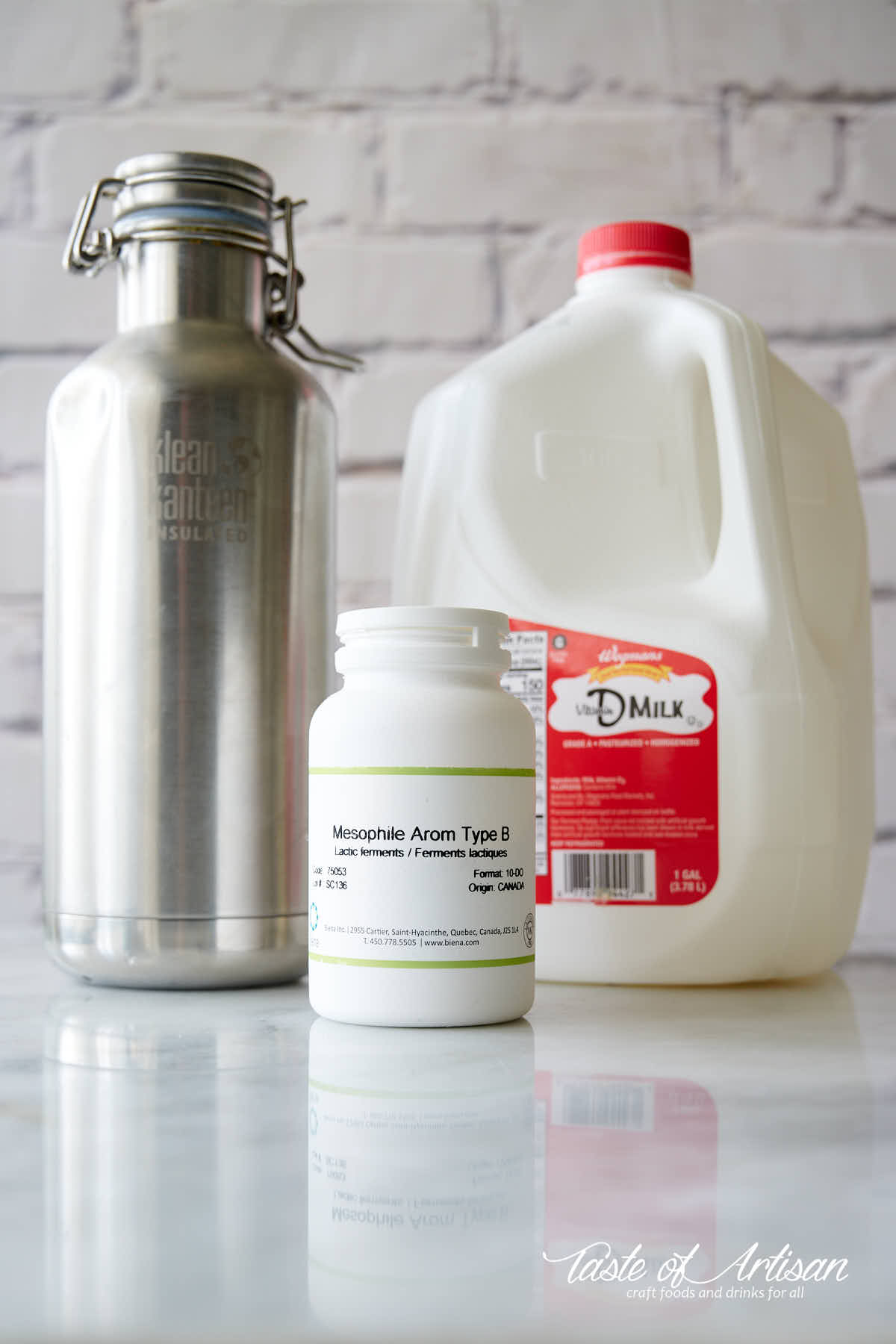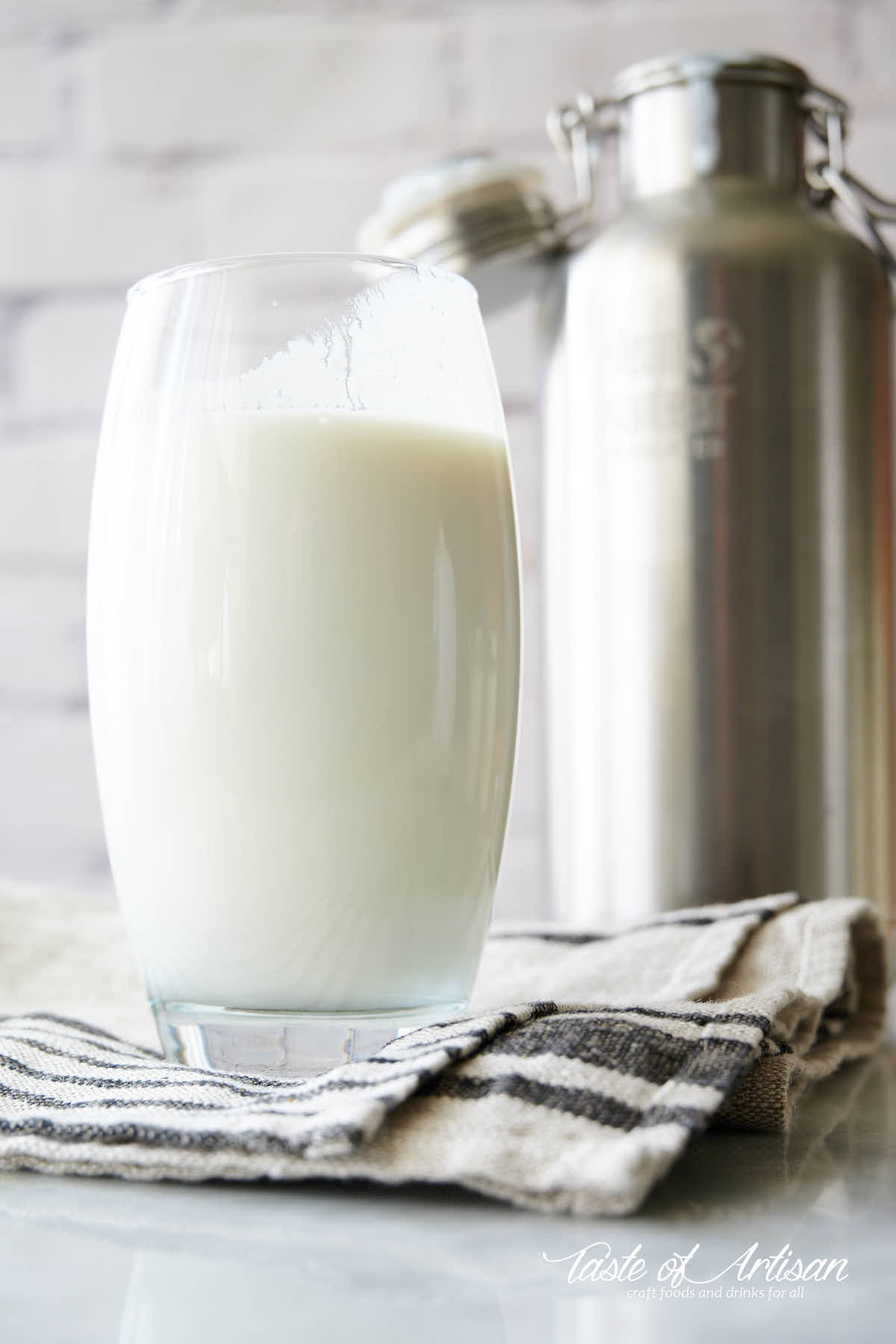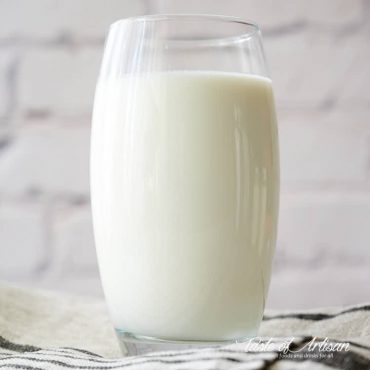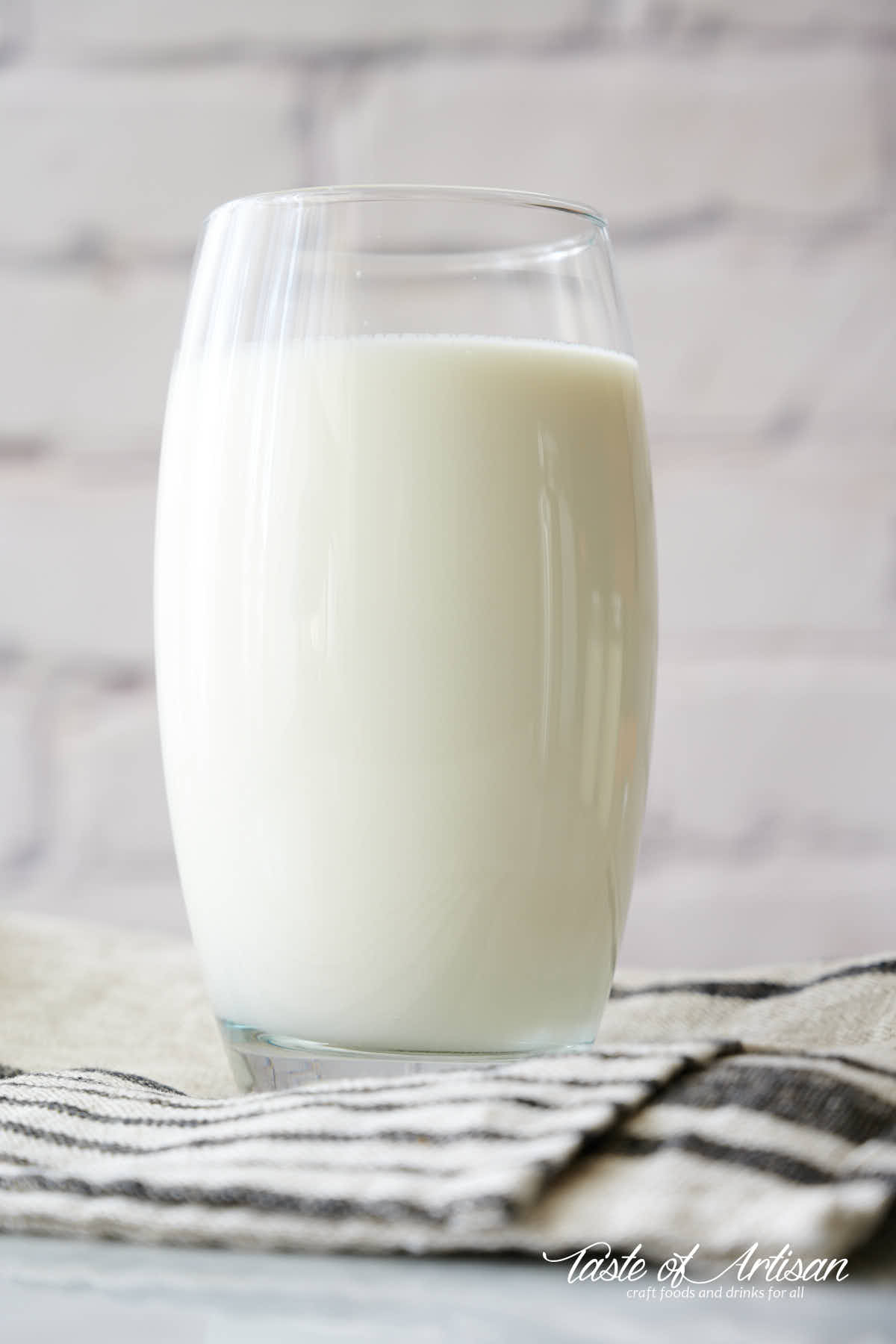There is nothing like homemade buttermilk, whether you put it in your recipe, or drink it with your morning muffin or pancake. Simply mix the ingredients in the evening and have the delicious buttermilk ready by the morning.
What is buttermilk?
There are two types of buttermilk, cultured and old-fashioned. Old-fashioned buttermilk was a by-product of butter production, made during churning of butter. Churned buttermilk is very different from cultured buttermilk. It's thin, slightly acidic and most often used in soups and sauces, primarily in northern Europe and South Asia.
Cultured buttermilk is basically pasteurized milk which is fermented by a lactic acid and aroma bacteria culture. It has a mild acid flavor and a smooth texture. Cultured buttermilk is what we know as 'buttermilk' here in North America, and it's the one that we buy from a grocery store.
How to make buttermilk at home
There several good ways to make buttermilk at home. Each has own benefits and shortcomings, and in the end it boils down to what works best for one's personal needs.
Method 1 - making buttermilk from a starter culture
By far, my preferred method for making buttermilk at home is to use a Mesophilic starter culture. You can think of a starter culture as yeast that you use to leaven bread. All you have to do is warm up some milk, add a tiny amount of the starter culture, place it in a thermos-like container, wait 12 hours and you will have delicious buttermilk. Keep in mind, buttermilk will leave a residual smell in a stainless steel container for quite some time, so it's best to use a dedicated container.

The convenience of using a starter culture cannot be overstated. A small package of it will make many gallons of buttermilk, and it will store in a freezer for up to 18 months.
My preferred starter culture is Mesophilic Aroma B, however Probat 222 and Flora Danica are very similar. All three give buttermilk similarly creamy, buttery and slightly tangy taste.

Method 2 - using buttermilk as a starter
If a starter culture is like yeast, using a bit of old buttermilk as a starter is like using a small amount of sourdough to leaven bread dough. You just need to make sure that the buttermilk you plan on using has live cultures of lactic acid bacteria in it. Most commercially sold buttermilk has them.
When using old buttermilk as a starter for making a batch of new buttermilk, keep in mind that it may take longer for buttermilk to be ready as the concentration of lactic acid bacteria in buttermilk will be lower compared to starter cultures.
One way to rectify that is to prepare a Mesophilic starter culture, much like you'd prepare a sourdough starter. This will give you a concentrated amount of lactic acid bacteria to make buttermilk as fast as from a starter culture.
To make butter milk from store-bought buttermilk, simply mix 1/4 cup of buttermilk per cup of fresh milk, warm up to 72F - 78F, transfer to a thermos-like container and let the milk set for 12-24 hours or until ready.
The downside of this method is that you may not have buttermilk on hand when you need it.

Ingredients
- 4 cups milk skim, 1%, 2% or whole
- 1/8 tsp Aroma B Mesophilic Culture
Instructions
- Slowly heat milk to 86F.
- Sprinkle the starter culture over the milk and let hydrate for 5 minutes.
- Stir well, about 20-25 strokes.
- Transfer to a thermos-like container, close and let ferment for 12 hours, or until the milk has thickened to the consistency of buttermilk.
- Use immediately or refrigerate.



Patricia says
Hello Victor, omgosh, didn't realize buttermilk was this easy to make! I've never used starter cultures. Will you describe in more detail their differences and why you prefer Mesophilic Aroma B over the other two? Probat 222 and Flora Danica
This is all new to me; I'm excited to try making buttermilk! Thank You ~ Patricia
Victor @ Taste of Artisan says
Super easy to make. I am not an expert on starter cultures but all three are very similar if not identical (just branded differently). See here - https://www.makecheese.ca/products/probat-222-aroma-b. I've been using Aroma B for a long time and like it a lot. Besides, it's more readily available locally.
Patricia says
Thank You!